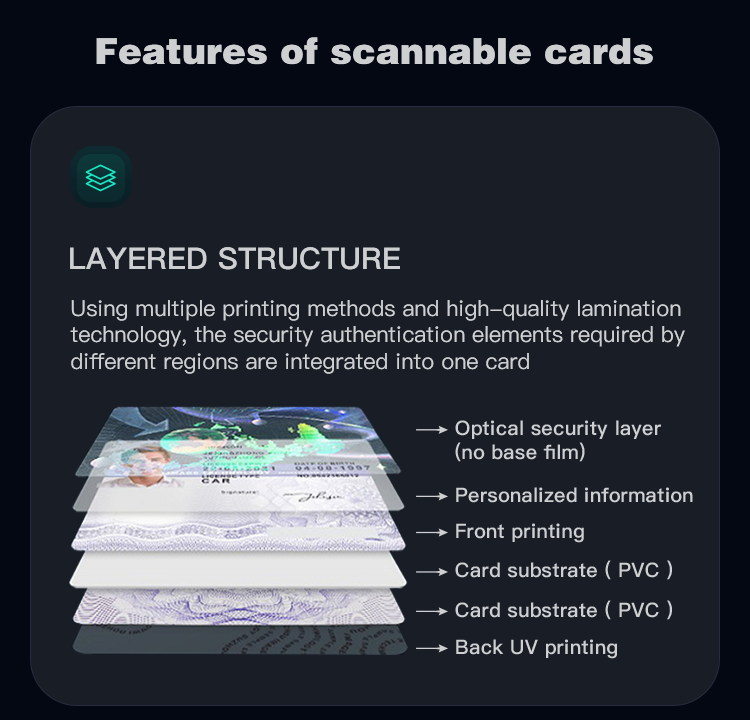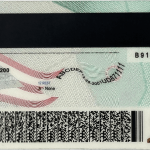In the realm of public transport, ensuring the security and smooth – running of operations is of utmost importance. As we approach 2025, the issue of fake IDs and the evolution of contactless ID verification systems are becoming increasingly relevant topics. Contactless ID verification has the potential to revolutionize the way we access public transport, bringing about a new level of convenience and security.
The Problem of Fake IDs in Public Transport
Fake IDs have long been a concern in various sectors, and public transport is no exception. In the past, individuals have used fake IDs to gain unauthorized access to discounted fares, bypass age – restricted services, or engage in other forms of fraudulent behavior. For example, students might use fake IDs to obtain discounted student fares when they are not eligible, or adults might use fake IDs to pose as seniors for reduced – price tickets. This not only results in financial losses for public transport operators but also undermines the integrity of the fare – structure and the overall service.

Moreover, fake IDs can also pose security risks. In some cases, individuals with malicious intent might use fake IDs to gain access to secure areas within public transport facilities or to board certain types of transport that have security restrictions. This can potentially lead to threats to the safety of passengers and staff.
Contactless ID Verification: A Promising Solution
Contactless ID verification is emerging as a powerful solution to combat the problem of fake IDs in public transport. Unlike traditional ID verification methods that often involve physical inspection of cards or documents, contactless ID verification uses advanced technologies such as biometrics, near – field communication (NFC), and mobile apps.
Biometric verification, for instance, can include fingerprint scanning, facial recognition, or iris scanning. These methods are highly accurate as they rely on unique physical characteristics of an individual. For example, facial recognition technology can quickly match a passenger’s face with the image stored in a secure database when they board a bus or enter a subway station. This makes it extremely difficult for someone to use a fake ID, as it is nearly impossible to replicate another person’s biometric features accurately.

NFC technology is also playing a significant role in contactless ID verification. Passengers can store their ID information on a mobile device or a smart card equipped with NFC. When they want to board a public transport vehicle or pass through a turnstile, they simply need to bring their device or card close to an NFC reader. The reader can then quickly verify the ID information wirelessly, providing a seamless and efficient verification process.
Mobile apps are another aspect of contactless ID verification. Many public transport operators are developing their own apps that allow passengers to store their ID and fare information. These apps can use features like QR code scanning or Bluetooth – based communication to verify a passenger’s identity and validate their fare payment. For example, a passenger can generate a unique QR code within the app, which can be scanned by a ticket inspector or a turnstile reader to confirm their identity and travel entitlement.
Implementation of Contactless ID Verification in Public Transport
The implementation of contactless ID verification in public transport requires careful planning and infrastructure development. First, public transport operators need to invest in the necessary hardware and software for the verification systems. This includes installing biometric scanners, NFC readers, and upgrading turnstiles and ticket – checking devices to be compatible with the new technology.
Data security is also a crucial aspect. Since contactless ID verification involves the storage and transmission of sensitive personal information, strict security measures must be in place to protect passengers’ data from unauthorized access, hacking, or misuse. Public transport operators need to work with reliable technology providers and adhere to strict data protection regulations.
Passenger education is another important factor. Many passengers may be unfamiliar with contactless ID verification technologies. Public transport operators need to conduct awareness campaigns to inform passengers about how the new systems work, how to use them, and the benefits they offer. This can include providing user – friendly guides, training sessions, and clear signage at transport facilities.
Integration with Existing Systems
To ensure a seamless transition to contactless ID verification, it is essential to integrate the new systems with existing fare – collection and passenger management systems. For example, the ID verification data should be able to communicate with the fare – payment system to ensure that passengers are charged correctly based on their identity and travel entitlement. This integration can also help in generating accurate ridership data, which is valuable for public transport planning and resource allocation.
Furthermore, contactless ID verification systems should be interoperable with other forms of identification and payment methods. For instance, passengers should be able to use their government – issued ID cards in combination with contactless technology, or use multiple payment options such as credit cards, mobile wallets, or prepaid cards in the context of contactless ID – based travel.
Common Problems and Solutions
- Problem: Technical Glitches
Solution: Public transport operators should have a dedicated technical support team on standby at all times. Regular system maintenance and updates should be carried out to prevent and address any technical issues promptly. Additionally, having backup verification methods, such as manual ID checks in case of system failures, can ensure that the flow of passengers is not disrupted. - Problem: Privacy Concerns
Solution: Operators need to be transparent about the data they collect, how it is used, and who has access to it. Clear privacy policies should be in place, and passengers should be given the option to control the sharing of their personal information. Encryption techniques should be used to safeguard the stored data, and strict compliance with data protection laws is a must. - Problem: Resistance from Passengers
Solution: As mentioned earlier, extensive passenger education campaigns are crucial. Demonstrations of how easy and convenient contactless ID verification is can be provided at transport hubs. Offering incentives such as discounted fares for early adopters can also encourage passengers to embrace the new technology. - Problem: Compatibility Issues
Solution: Public transport operators should work with multiple technology providers to ensure that the contactless ID verification systems are compatible with a wide range of mobile devices, smart cards, and other identification and payment methods. Standardization of technical specifications can also help in resolving compatibility problems. - Problem: Cost of Implementation
Solution: Operators can explore partnerships with technology companies to share the costs of implementation. Additionally, the long – term benefits of reduced fraud and improved operational efficiency can be used to justify the initial investment. Government subsidies or grants may also be available to support the adoption of new security and verification technologies in public transport. - Problem: False Positives and Negatives
Solution: For biometric systems, continuous improvement of the algorithms is necessary to reduce the occurrence of false positives (where an innocent person is wrongly flagged) and false negatives (where a fraudulent person is not detected). Regular calibration of the biometric devices and user – feedback mechanisms can also help in fine – tuning the accuracy of the verification process. - Problem: Training Staff
Solution: Comprehensive training programs should be developed for public transport staff, including ticket inspectors, station attendants, and customer service representatives. The training should cover how to operate the new contactless ID verification systems, how to handle technical issues, and how to assist passengers who may be having difficulties with the technology. - Problem: Keeping Up with Technological Advancements
Solution: Public transport operators should establish a technology – monitoring and evaluation team. This team can keep track of the latest advancements in contactless ID verification and other related technologies, and recommend upgrades or changes to the existing systems to ensure that they remain effective and up – to – date. - Problem: Integration with Third – Party Services
Solution: Clear communication channels and standardized interfaces should be established when integrating with third – party services such as payment gateways or identity verification providers. Service – level agreements (SLAs) should be in place to define the responsibilities and performance expectations of each party involved in the integration. - Problem: Scalability
Solution: The contactless ID verification systems should be designed with scalability in mind from the start. This means that they should be able to handle an increasing number of passengers and transactions as the public transport network grows or as ridership increases. Cloud – based solutions can offer the flexibility and scalability required for future expansion.
Fake ID Pricing
unit price: $109
| Order Quantity | Price Per Card |
|---|---|
| 2-3 | $89 |
| 4-9 | $69 |
| 10+ | $66 |



